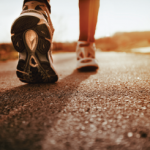Lynne Feehan, PhD, PT, is the leader, clinical research for rehabilitation in the Fraser Health Authority in British Columbia and a clinical associate professor in the Department of Physical Therapy at the University of British Columbia, Vancouver, Canada.
Marie Westby, PhD, PT, is the physical therapy teaching supervisor in the Mary Pack Arthritis Program, Vancouver, British Columbia, Canada, a postdoctoral fellow in the School of Public Health, University of Alberta, Edmonton, Alberta, Canada, and a member of the ARHP Practice Committee.
ad goes here:advert-1
ADVERTISEMENT
SCROLL TO CONTINUE
References
- World Health Organization. Global health risks. 2009. http://www.who.int/healthinfo/global_burden_disease/global_health_risks/en/index.html
- World Health Organization. Global recommendations on physical activity for health. 2010. http://www.who.int/dietphysicalactivity/publications/9789241599979/en/index.html.
- Matthews CE, George SM, Moore SC, et al. Amount of time spent in sedentary behaviors and cause-specific mortality in US adults. Am J Clin Nutr. 2012 Feb;95(2):437–445.
- Thorp AA, Owen N, Neuhaus M, et al. Sedentary behaviors and subsequent health outcomes in adults. A systematic review of longitudinal studies, 1996–2011. Am J Prev Med. 2011 Aug;41(2):207–215.
- Conn VS, Hafdahl AR, Minor MA, et al. Physical activity interventions among adults with arthritis: Meta-analysis of outcomes. Semin Arthritis Rheum. 2008 Apr;37(5):307–316.
- Plasqui G. The role of physical activity in rheumatoid arthritis. Physiol Behav. 2008 May 23;94(2):270–275.
- Munsterman T, Takken T, Wittink H. Are persons with rheumatoid arthritis deconditioned? A review of physical activity and aerobic capacity. BMC Musculoskel Disord. 2012 Oct 18;13:202.
- Tierney M, Fraser A, Kennedy N. Physical activity in rheumatoid arthritis: A systematic review. J Phys Act Health. 2012 Sep;9(7):1036–1048.
- Prioreschi A, Hodkinson B, Avidon I, et al. The clinical utility of accelerometry in patients with rheumatoid arthritis. Rheumatology (Oxford). 2013 Sep;52(9):1721–1727.
- Garber CE, Blissmer B, Deschenes MR, et al. American College of Sports Medicine position stand. Quantity and quality of exercise for developing and maintaining cardiorespiratory, musculoskeletal, and neuromotor fitness in apparently healthy adults: Guidance for prescribing exercise. Med Sci Sports Exerc. 2011 Jul;43(7):1334–1359.
- U.S. Department of Health and Human Services. The Surgeon General’s vision for a healthy and fit nation. Rockville, Md. January 2010. http://www.ncbi.nlm.nih.gov/books/NBK44660/pdf/TOC.pdf.
- Dunstan DW, Howard B, Healy GN, et al. Too much sitting—A health hazard. Diabetes Res Clin Pract. 2012 Sep;97(3):368–376.
- Schuna JM, Johnson WD, Tudor-Locke C. Adult self-reported and objectively monitored physical activity and sedentary behavior: NHANES 2005–2006. Int J Behav Nutr Phys Act. 2013 Nov 11;10:126.
- Hamilton MT, Healy GN, Dunstan DW, et al. Too little exercise and too much sitting: Inactivity physiology and the need for new recommendations on sedentary behavior. Curr Cardiovasc Risk Rep. 2008 Jul;2(4):292–298.
- Tremblay MS, Colley RC, Saunders TJ, et al. Physiological and health implications of a sedentary lifestyle. Appl Physiol Nutr Metab. 2010 Dec;35(6):725–740.
- Buman MP, Winkler EA, Kurka JM, et al. Reallocating time to sleep, sedentary behaviors, or active behaviors: Associations with cardiovascular disease risk biomarkers, NHANES 2005–2006. Am J Epidemiol. 2014 Feb 1;179(3):323–334.
- Wen CP, Wai JP, Tsai MK, et al. Minimal amount of exercise to prolong life: To walk, to run, or just mix it up? J Am Coll Cardiol. 2014 Aug 5;64(5):482–484.
- Tudor-Locke C, Craig CL, Aoyagi Y, et al. How many steps/day are enough? For older adults and special populations. Int J Behav Nutri Phys Act. 2011 Jul 28;8:80.
- Chau JY, Merom D, Grunseit A, et al. Temporal trends in non-occupational sedentary behaviours from Australian Time Use Surveys 1992, 1997 and 2006. Int J Behav Nutr Phys Act. 2012 Jun 19;9:76–83.


